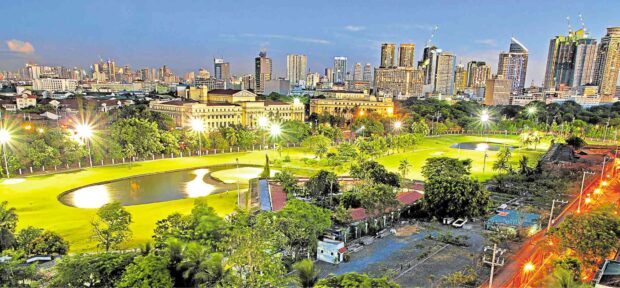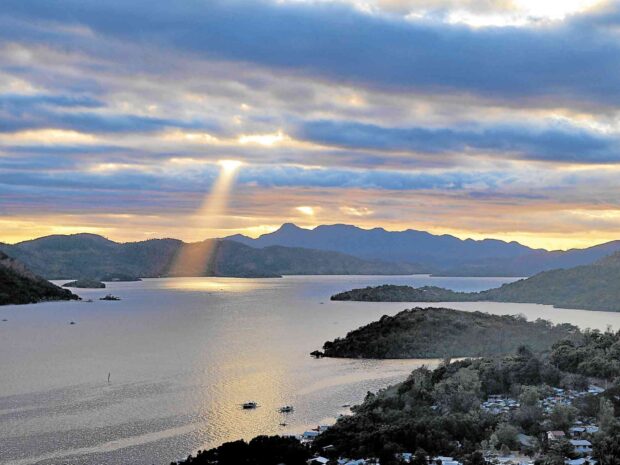
May is often considered the last month of summer in the Philippines.
It also marks the onset of fiesta season—a peak travel month when vacationers visit hometowns, attend festivals, and travel to different places to escape the urban heat and chaos, or take a break from the routine and stress of daily life.
Essence of tourism
“Escape” best captures the essence of tourism—probably even more evident this year with people on revenge travel. The easing of restrictions allowed people to rediscover a sense of freedom that was lost during the height of the pandemic.
Tourism is essentially a socio-economic phenomenon defined by geography since its production and consumption is place-specific. It involves the mobility of people to various places in their desire to experience the distinctive attributes or local character that such places offer. But it also involves the movement of goods, information, services and capital across time and space to enable an immersive experience for tourists.
Tourism development is often a mechanism for channeling investment capital to new destinations, generating employment, diversifying local economies and creating new patterns of economic linkage.
And since tourists tend to originate from wealthier economies, tourism is a potential medium for redistribution of economic wealth from richer to poorer regions, both domestically and internationally, thereby aiding the transformation of rural agrarian economies to urban service economies.

Transformation of hinterlands
This economic flow manifests geographically over time as a form of spatial diffusion of uses between urban areas and rural hinterlands. However, this spatial diffusion can lead to the overexploitation, degradation and commodification of sensitive natural environments.
This is particularly evident in mature tourist locations like Tagaytay and Baguio. As a destination becomes popular, more capital is infused to improve tourism services and infrastructure which bring about even more activity, geographic expansion, migration and urbanization.
A view of the historical images from Google Earth of some popular tourist destinations such as Boracay, Palawan or Tagaytay will reveal the extent of transformation of these vacation spots.
Tourism areas in the smaller islands in Central Philippines tend to be more geographically concentrated and less prone to diffusion due to constrained accessibility. In a way, the remoteness of some island destinations helps preserve their pristine nature. But once tourism gains a foothold, these places can still succumb to overexploitation if the pace of development outstrips the capacity to manage change and absorb growth.
Thus, some former exotic places are eventually overrun by commercial establishments, hotel chains, high rises along with consequent effects such as congestion and pollution, eroding the qualities that made them attractive to begin with.
Management of growth
Tourism is a unique economic activity in which the consumed good, being experiential and intangible, never leaves the location where the good is produced. This capacity for tourism to create considerable wealth from resources that are perceived to be naturally and freely available is a major motivation for investors, property developers and governments.
Tourist spots are thus theoretically inexhaustible resources until or unless they degrade or fall out of fashion.
However, tourism resources are still finite and exhaustible. While tourism development catalyzes the evolution of the place, transforming hinterlands into hubs of economic activity, overconsumption and overdevelopment can cause the tourism resource to degrade—scenic views can be marred by structures and natural habitats can be destroyed.
Tourism-led economic growth can also bring about the commodification or displacement of local culture, inflate local prices of land, labor and goods, and exacerbate inequality. Tourism development can thus be self-defeating if its growth will lead to the depletion of its main product and the deterioration of the vacation experience.
But tourism cannot exist without tourists. Vacation sites remain inert entities until such time they become populated with people whose congregation in these favored locations establish those sites as tourist places—thereby enabling the production of more facilities, establishments, and infrastructure to attract more people.
With this geographically expanding cycle of production and consumption, we can imagine that destinations that are truly authentic and unspoiled will increasingly become rare and rarefied.
Urban tourism
There is, however, another form of tourism that is less dependent on natural ecosystems as it relies on the built environment.
Dense urban places such as New York, Tokyo and Hong Kong are frequented by tourists and seen as must-visit destinations. Cities like Paris, London, Beijing are concurrently capital cities, global business hubs, and cosmopolitan destinations.
Cities can be the counterbalance to natural settings. Unlike natural destinations, the attributes that people go to in cities can be regenerated. More theaters, museums, noteworthy architecture, parks, restaurants, shops, hotels, entertainment districts can be created continuously to satisfy tourist consumption without necessarily degrading the sources of their production.
Many cities have done this to tap into the international tourism market and the downstream economic benefits they yield. What is good about investing in urban tourism infrastructure is that it also tends to increase the livability of cities.
The experience of place
While there is a clear distinction between natural and urban destinations, both rely on the underlying narratives that the places offer. Tourism, in the end, is experiential. Visitors look for the sense of being transported to experiences that contrast with their daily lives.
As sociologist John Urry suggests, tourism results from a basic binary division between the ordinary or every day and the extraordinary.
Tourism is also a strongly visual practice. We read travel guides, imagine the places we intend to visit, and visualize ourselves there. We communicate our experiences visually—through photographs, videos, postcards and social media posts. Most of all, it relies on creating a sense of place, wherein the location comes to represent more complex emotions and feelings, personal attachments and symbolic meaning which cause people to identify and connect with particular places.
In the end, tourism embodies the essence of what urbanism is all about and can inform us about how our cities can be planned.
The author is founder and principal of JLPD, a master planning and consultancy practice. www.jlpdstudio.com.
All photographs by Michael de Vera, artist photographer, https://michaeldevera.wixsite.com/putiman

